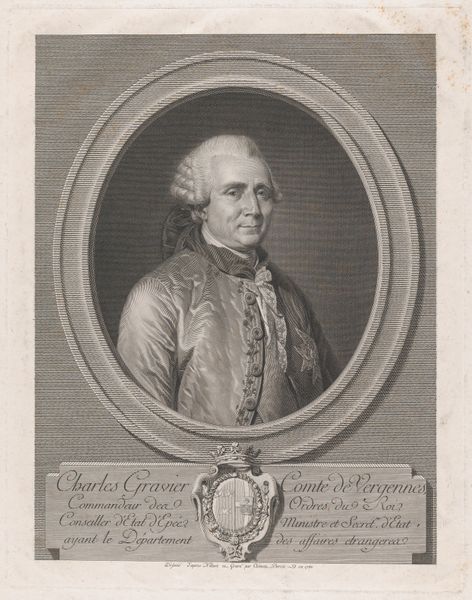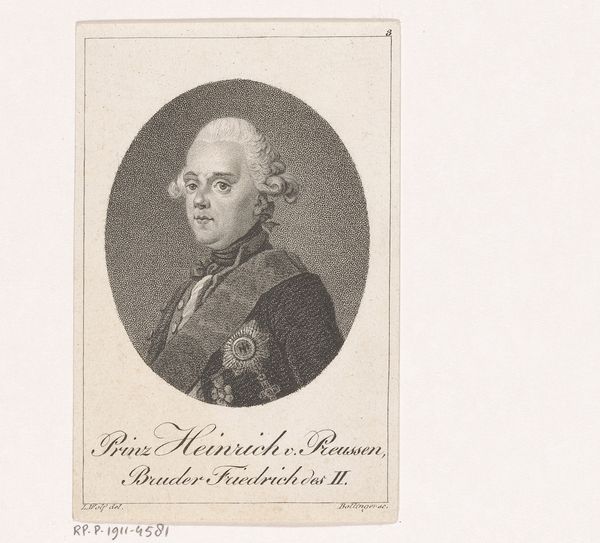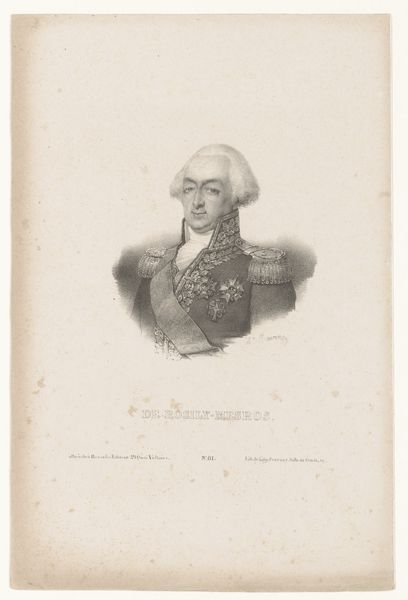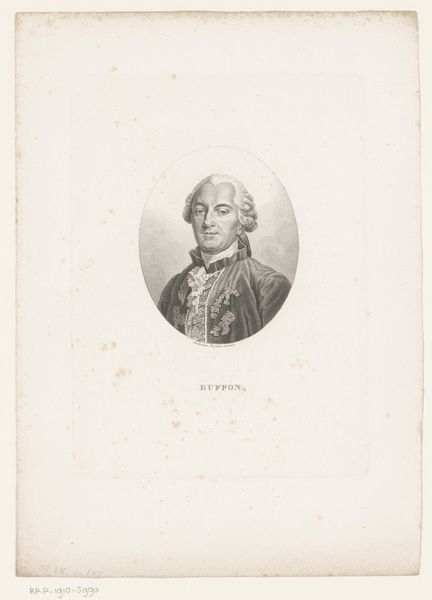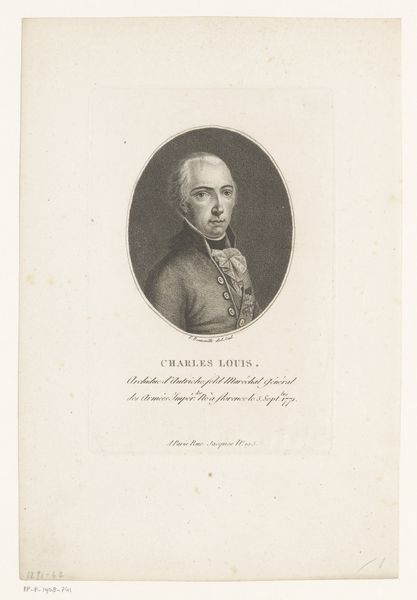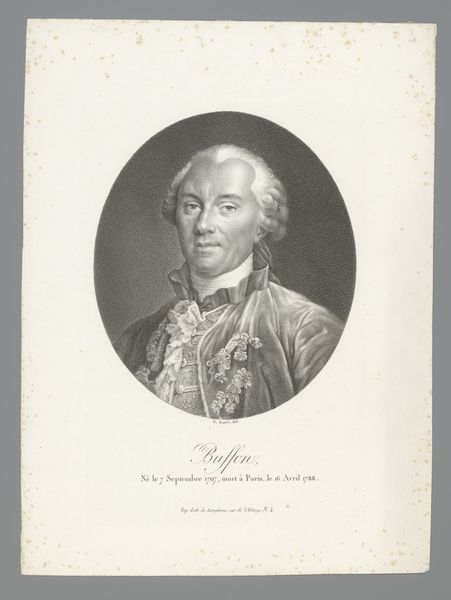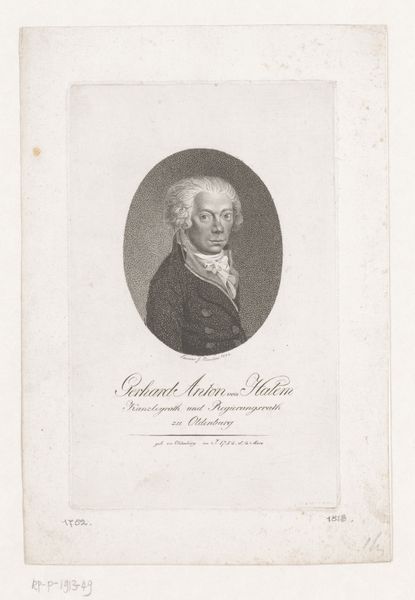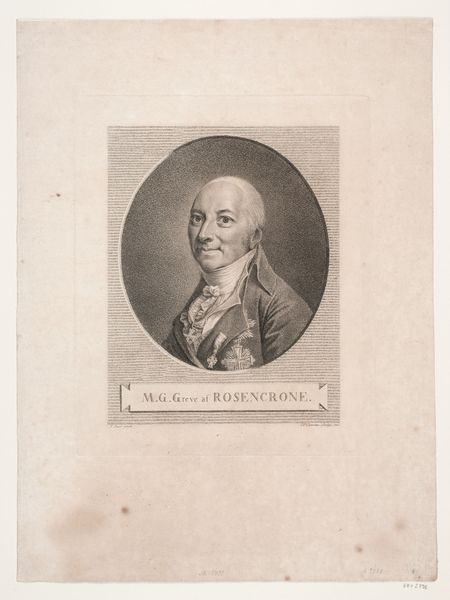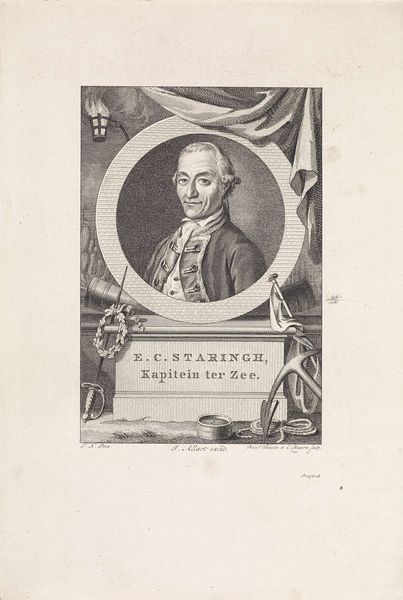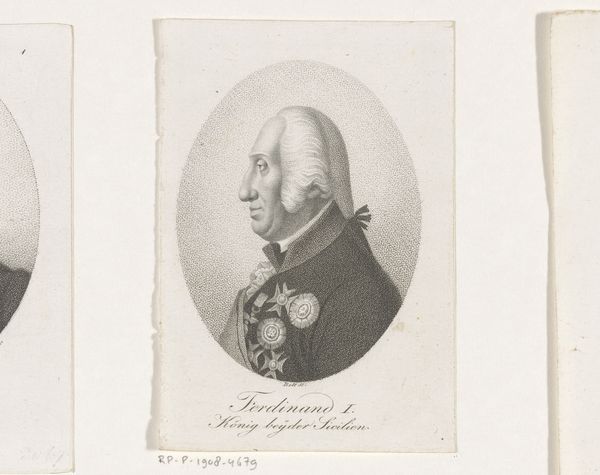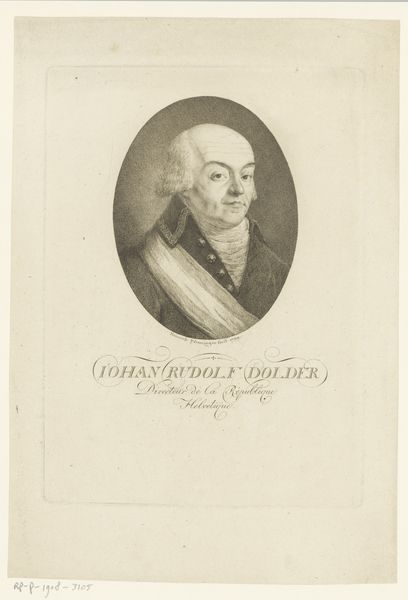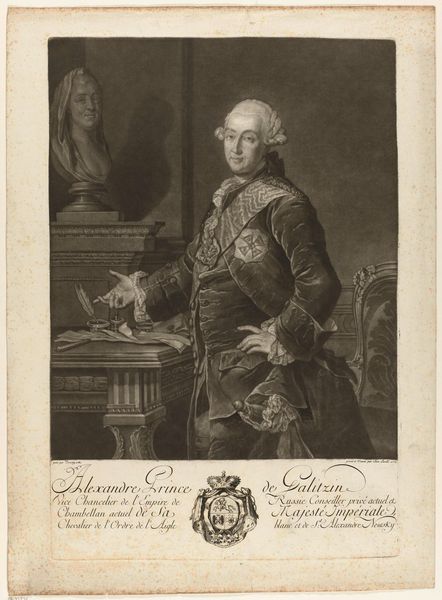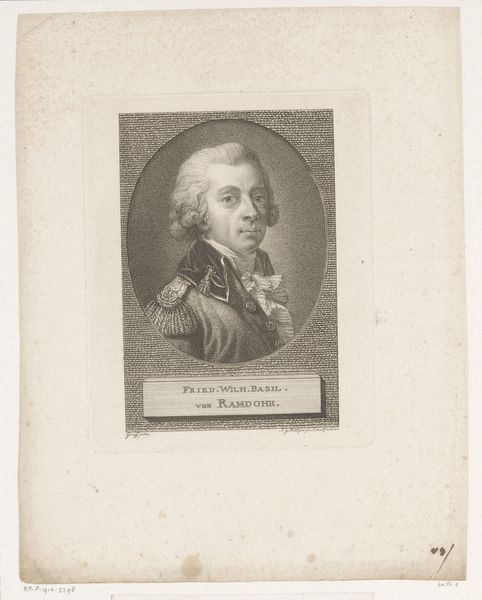
Handtekening van Karel Christiaan van Nassau-Weilburg 1750 - 1788
0:00
0:00
Dimensions: height 21 mm, width 91 mm
Copyright: Rijks Museum: Open Domain
Curator: Looking at this print, my initial thought is the remarkable stillness it evokes, despite all the ornamentation. Editor: Well, let's situate it first. What we're observing is an engraving of "Handtekening van Karel Christiaan van Nassau-Weilburg", or Signature of Charles Christian of Nassau-Weilburg. The work is dated sometime between 1750 and 1788, rendered in printmaking medium and it resides here at the Rijksmuseum. Curator: The circular framing device draws your attention so firmly into the Prince’s face; it gives the piece a powerful sense of contained importance, doesn't it? Do you feel he means to project steadfast authority? Editor: Precisely. Consider the elements the artist used – the starburst of his honorific sash, and that cascade of lace. They speak of princely duty. And the carefully coiffed wig! All very deliberate signifiers of Baroque aristocracy at its height. This portrait becomes almost a template of royal representation. It mirrors, I think, their own self-image. Curator: It’s fascinating to see how these symbols shift and sometimes erode over time. An interesting choice on their behalf! This isn't strictly a propaganda portrait, however. I believe this was used as more of an intimate way of sharing the face and signature of Charles Christian throughout court, a much more formal precursor to an autograph, perhaps. Editor: Perhaps. Consider also the way portraiture was evolving then. Prints like this allowed wider distribution of a ruler's image and identity, a controlled release of iconography into the public sphere. The very act of reproducing and disseminating this image contributes to the ruler's construction of an image as powerful and respected. It has an affect that still holds strong today, though admittedly dated by current aesthetics. Curator: Looking at it now, I am really drawn back to that circle. The engraving offers a fixed moment within very specific temporal and symbolic circumstances, and those elements remain, regardless of contemporary affect. It has real weight. Editor: Agreed. These images and their embedded codes remain for us to decode—even if the society that created them is long past.
Comments
No comments
Be the first to comment and join the conversation on the ultimate creative platform.
